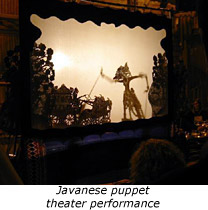 |
|||||||||||||||||||
 |
|||||||||||||||||||
 |
|||||||||||||||||||
|
|
|||||||||||||||||||
 |
|||||||||||||||||||
|
Listeners also participate in making music, whatever their role—passive or active; knowledgeable insiders or musical “tourists;” glued to their headphones or dancing in the aisles. Asking questions about who is listening and how can be quite revealing. In staged concerts, music is often performed for audiences other than those for whom the music was originally created. Performing for audiences other than the “original listeners” can help to change the music itself. In 1989, a group of choral singers from Bulgaria performed for an eager crowd of “world-music” enthusiasts at the Lisner Auditorium in Washington, D.C. A colleague brought me backstage to meet the performers. Through a translator, I asked one of the women how they were enjoying their tour of the United States. “It’s wonderful that people want to hear this music,” she said. “But I still am not used to singing in that voice on a stage.”
The singer was referring to the piercing, penetrating “outside” voice that women use when singing their songs in the meadows of their homeland. Her comment reminds us just how important the listener can be in shaping a musical performance. If we traveled to a village in Bulgaria where young women gather with their friends in a tight circle, shoulders touching, to sing the songs they know from childhood, we would be listening to their music in its intended setting. Chances are you would not be just listening, but also participating. There are no “audiences” at such gatherings because everyone present is expected to sing. If you don’t know the tune, you may be asked to “drone” a part, holding a single note while another singer adds a melody above it. How is the experience different when listening to this music in a concert hall?
Adapting to the recording studio environment, in which the sound engineers and their microphones run the show, raises a very different set of questions about how technology intervenes in our listening experience. In the early days of recorded popular music, blues, jazz, and rural music performers adapted to the four-minute song length (the “side”) imposed by the limitations of the 78-rpm recording.
Likewise, most listeners adjust their ears and eyes in some fashion. In church and onstage, an audience for a gospel performance often joins in the show, shouting back encouragement to their performers such as “Amen!” or “Oh, yeah!” Outsiders to a tradition often frame what they hear in terms of their own life experience. If we are aware of how we listen to music—if we listen critically—we can narrow the distance between a musical event and its “foreign” performance setting. However, we need to keep in mind how performers expect us to listen—do they want us to sit still or tap our feet? Is this music for dancing? Do people in this culture have in mind a “right” way to listen to this music or is it considered to be music for everyone? Understanding the listening experience can help us fully appreciate the setting of a musical event and what this music is supposed to mean.
|
||||||||||||
|
finding world history | unpacking evidence | analyzing documents | teaching sources | about |
||
